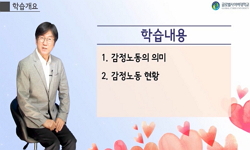An image of a child based on the children`s angel-like innocence theory introduced in the 1920`s presented how ‘unemotional’ a leading character was. On the contrary, the images of the children that fairy tale writers of KAPE had created until the...
http://chineseinput.net/에서 pinyin(병음)방식으로 중국어를 변환할 수 있습니다.
변환된 중국어를 복사하여 사용하시면 됩니다.
- 中文 을 입력하시려면 zhongwen을 입력하시고 space를누르시면됩니다.
- 北京 을 입력하시려면 beijing을 입력하시고 space를 누르시면 됩니다.
https://www.riss.kr/link?id=A101990443
- 저자
- 발행기관
- 학술지명
- 권호사항
-
발행연도
2015
-
작성언어
Korean
- 주제어
-
KDC
810
-
등재정보
KCI등재
-
자료형태
학술저널
-
수록면
343-371(29쪽)
-
KCI 피인용횟수
0
- 제공처
-
0
상세조회 -
0
다운로드
부가정보
다국어 초록 (Multilingual Abstract)
An image of a child based on the children`s angel-like innocence theory introduced in the 1920`s presented how ‘unemotional’ a leading character was. On the contrary, the images of the children that fairy tale writers of KAPE had created until the middle of the 1930`s talked about how ‘emotional’ the leading characters were. Those images of the children which are considered totally opposite to each other from the aspect of ‘emotions’ seem to be confronting as the two extremes. However, all of them can be regarded as ‘heroic’ images of the children in that they have been creating some unrealistic children. In the 1920`s, an attempt on the discipline of ‘emotions’ was made on the assumption that the ‘emotions’ were something private as well as subjective. In addition, through the attempt, the emotional identity was created. But, the spread of the identity through emotions develops this idea of totalitarianism as individuals come to believe in this imaginary community spirit, ‘the people’. What made all these phenomenons really happen is this emotion, ‘a sense of great satisfaction’. However, a ‘group’ that is established through such process includes ambivalent characteristics in that they are the people who can be most intimidating but also who can be controlled at the same time. The characteristics of the group become a chance for imperialistic Japan to come up with an idea of making colonial people. As strategies that Japan used to make the people, the generalization of heroes and the cult of success do have connections with the ‘heroic’ images of the children appeared in Korean children`s stories during the 1920`s and the 1930`s. After all, in terms of all the hard work done by the intellectual during the colonial period to create some independent images of the children for the liberation, the work is considered to be destined to co-exist with the work of imperialistic Japan to make subjects of the Japanese Empire.
참고문헌 (Reference)
1 김영순, "한일아동문학 수용사 연구" 채륜 95-, 2013
2 원종찬, "한일 아동문학의 기원과 성격 비교" 인하대학교 한국학연구소 (11) : 12-, 2000
3 조은숙, "한국 아동문학의 형성" 소명출판 29-, 2009
4 손유경, "프로문학과 '감각'의 문제" 민족문학사학회 (32) : 126-152, 2006
5 슬라보예 지젝, "이데올로기라는 숭고한 대상" 인간사랑 64-, 2002
6 이재복, "우리 동화 바로 읽기" 소년한길 19-, 1995
7 가와하라 카즈에, "어린이관의 근대" 소명출판 113-, 2007
8 서동수, "아동의 발견과 ‘식민지 국민’의 기획" 동화와번역연구소 (16) : 241-269, 2008
9 "아동의 감정교육(3)"
10 원종찬, "아동문학과 비평정신" 창비 108-, 2001
1 김영순, "한일아동문학 수용사 연구" 채륜 95-, 2013
2 원종찬, "한일 아동문학의 기원과 성격 비교" 인하대학교 한국학연구소 (11) : 12-, 2000
3 조은숙, "한국 아동문학의 형성" 소명출판 29-, 2009
4 손유경, "프로문학과 '감각'의 문제" 민족문학사학회 (32) : 126-152, 2006
5 슬라보예 지젝, "이데올로기라는 숭고한 대상" 인간사랑 64-, 2002
6 이재복, "우리 동화 바로 읽기" 소년한길 19-, 1995
7 가와하라 카즈에, "어린이관의 근대" 소명출판 113-, 2007
8 서동수, "아동의 발견과 ‘식민지 국민’의 기획" 동화와번역연구소 (16) : 241-269, 2008
9 "아동의 감정교육(3)"
10 원종찬, "아동문학과 비평정신" 창비 108-, 2001
11 베네딕트 앤더슨, "상상의 공동체" 나남 273-, 2002
12 김동춘, "사회로서의 민족, 사회이념으로서 민족주의" 한국공간환경학회 (28) : 66-97, 2007
13 경희대학교 한국아동문학연구센터, "별나라를 차져간 少女2" 국학자료원 113-459, 2012
14 경희대학교 한국아동문학연구센터, "별나라를 차져간 少女1" 국학자료원 257-, 2012
15 애덤 스미스, "도덕감정론" 비봉출판사 19-24, 1996
16 코모리 요우이치, "내셔널 히스토리를 넘어서" 삼인 226-227, 1999
17 귀스타프 르봉, "군중심리" 문예출판사 66-, 2006
18 강준만, "감정독재: 세상을 꿰뚫는 50가지 이론" 인물과사상사 275-, 2013
19 박숙자, "‘통쾌’에서 ‘명랑’까지 : 식민지 문화와 감성의 정치학" 한민족문화학회 (30) : 213-238, 2009
20 김영순, "1930년대에 교차하는 한국과 일본의 아동문학" 한국아동청소년문학학회 (7) : 55-86, 2010
동일학술지(권/호) 다른 논문
-
- 한국현대소설학회
- 강진호(Jin Ho Kang)
- 2015
- KCI등재
-
황순원의 <신(神)들의 주사위>에 나타난 양자론적 세계관
- 한국현대소설학회
- 노승욱(Seung Wook Roh)
- 2015
- KCI등재
-
- 한국현대소설학회
- 문흥술(Heung Sul Moon)
- 2015
- KCI등재
-
- 한국현대소설학회
- 이승하(Seung Ha Lee)
- 2015
- KCI등재
분석정보
인용정보 인용지수 설명보기
학술지 이력
| 연월일 | 이력구분 | 이력상세 | 등재구분 |
|---|---|---|---|
| 2026 | 평가예정 | 재인증평가 신청대상 (재인증) | |
| 2020-01-01 | 평가 | 등재학술지 유지 (재인증) |  |
| 2017-01-01 | 평가 | 등재학술지 유지 (계속평가) |  |
| 2013-01-01 | 평가 | 등재학술지 유지 (등재유지) |  |
| 2010-01-01 | 평가 | 등재학술지 유지 (등재유지) |  |
| 2008-01-01 | 평가 | 등재후보 1차 FAIL (등재후보1차) |  |
| 2006-01-01 | 평가 | 등재학술지 유지 (등재유지) |  |
| 2003-01-01 | 평가 | 등재학술지 선정 (등재후보2차) |  |
| 2002-01-01 | 평가 | 등재후보 1차 PASS (등재후보1차) |  |
| 2000-07-01 | 평가 | 등재후보학술지 선정 (신규평가) |  |
학술지 인용정보
| 기준연도 | WOS-KCI 통합IF(2년) | KCIF(2년) | KCIF(3년) |
|---|---|---|---|
| 2016 | 0.6 | 0.6 | 0.6 |
| KCIF(4년) | KCIF(5년) | 중심성지수(3년) | 즉시성지수 |
| 0.6 | 0.63 | 1.017 | 0.15 |




 DBpia
DBpia






